- News
- Reviews
- Bikes
- Accessories
- Accessories - misc
- Computer mounts
- Bags
- Bar ends
- Bike bags & cases
- Bottle cages
- Bottles
- Cameras
- Car racks
- Child seats
- Computers
- Glasses
- GPS units
- Helmets
- Lights - front
- Lights - rear
- Lights - sets
- Locks
- Mirrors
- Mudguards
- Racks
- Pumps & CO2 inflators
- Puncture kits
- Reflectives
- Smart watches
- Stands and racks
- Trailers
- Clothing
- Components
- Bar tape & grips
- Bottom brackets
- Brake & gear cables
- Brake & STI levers
- Brake pads & spares
- Brakes
- Cassettes & freewheels
- Chains
- Chainsets & chainrings
- Derailleurs - front
- Derailleurs - rear
- Forks
- Gear levers & shifters
- Groupsets
- Handlebars & extensions
- Headsets
- Hubs
- Inner tubes
- Pedals
- Quick releases & skewers
- Saddles
- Seatposts
- Stems
- Wheels
- Tyres
- Health, fitness and nutrition
- Tools and workshop
- Miscellaneous
- Tubeless valves
- Buyers Guides
- Features
- Forum
- Recommends
- Podcast
feature
 Cervelo S5 riding 1.jpg
Cervelo S5 riding 1.jpg12 of the fastest aero road bikes
The future is aero. Look at many of the bikes and products released in the last couple of years and it's easy to see the industry is focusing on aerodynamics. More and more manufacturers now stepping up to offer aero road bikes, arguably the biggest trend in road cycling right now, so we've rounded up 12 of the fastest for you.
Aero road bikes essentially draw the aerodynamic features from time trial bikes into a road frame, and balance the demands of weight and stiffness into a package that, on paper, looks to be the ideal all-round choice. There's a lot to be said for aerodynamics when cycling. Slice through the air cleanly and with less drag and you’ll go faster, or ride at any given speed with a lower power output. Who doesn't like the sound of that?
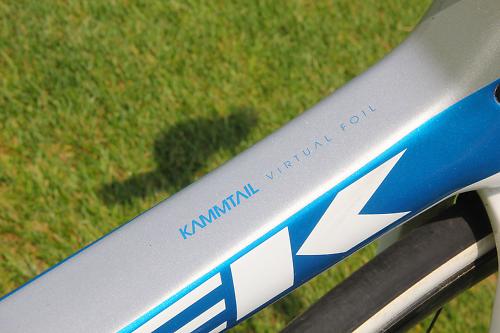
While the body makes up the chunk of that wind resistance - it’s about 80% - the bicycle is still a significant factor. It's enough for engineers and designers to focus on making road frames and products more slippery in the air. In the pro peloton aero road bikes have been quickly adopted, where the margins of victory are very slim and there has been a focus on gaining ever smaller performance gains over the years.
Weight, and the lack thereof, used to be the main driving force of frame development. Along with stiffness, these were the two cornerstones of bike design. These days most bikes are light, many well below the UCI’s 6.8kg weight limit (which doesn’t affect us non-racers anyway), and come with more stiffness than is sometimes comfortable.
So aerodynamics is becoming more important for manufacturers. We’ve recently heard the news that Specialized have built their own wind tunnel and the Belgian cycling industry is going to invest in its own tunnel too. Despite most manufacturers testing in wind tunnels, aero road bikes don’t look identical. There’s a lot to be said for interpretation of data. There are shared design trends though: skinny, aero-shaped tubes, integrated brakes, and internal cable routing.
With all that in mind, we decided to take a look at the current offerings, and we’ve rounded up 12 aero road bikes below. These aren’t bike reviews, but where we have reviewed the bike previously we’ve linked through to the relevant article.
Cervelo S5
The whole point of the S5 is that it’s an aero road bike, nicking ideas and features from Cervélo’s all-conquering time trial range. So, you get ultra skinny tubes and a tiny frontal area. Walk directly away from it 10 yards and you might never find it again. Okay, that’s not true, but you get the idea – it’s thin.
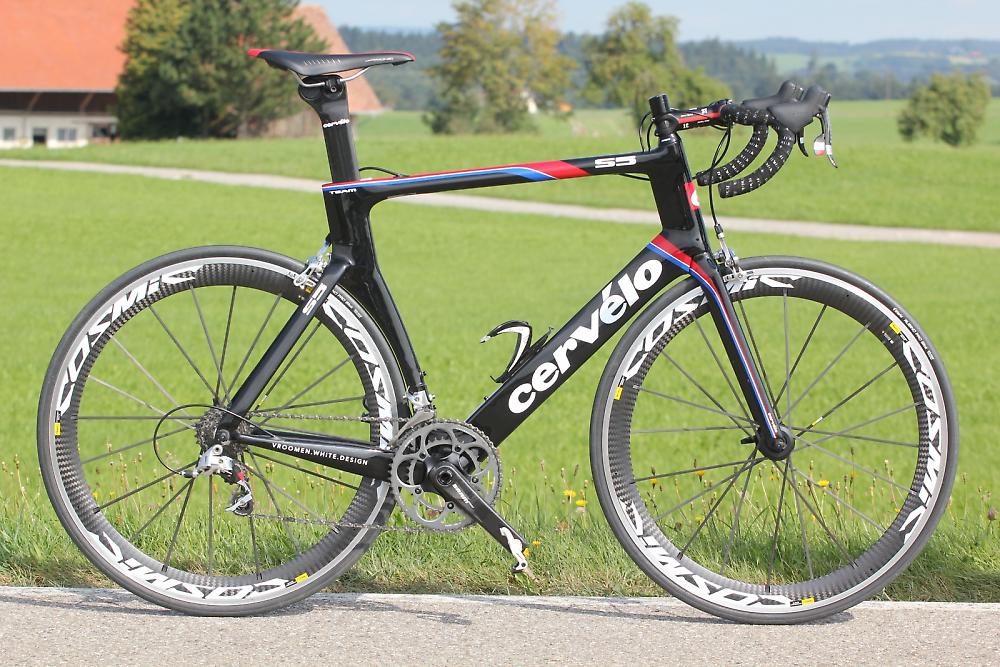
The cutaway seat tube smooths the airflow from the frame to the rear wheel while the dropped down tube does a similar job further forward, smoothing the airflow from the fork to the frame and minimizing the turbulence behind the fork crown. The head tube is an hourglass affair with a cinched in waist, the seatstays are crazy-thin and they manage the airflow over the rear brake caliper. Want a few more aero features? The seatpost is like a knife-edge, the cables run internally… Aerodynamically speaking, there’s a lot going on here.
The Cervelo S5 range includes two models, the S5 Team and S5 VWD, with frameset prices starting from £2,999.99.
BMC TimeMachine TMR01
The development of the TimeMachine happened at about the same time as that of the TM01 time trial bike, introduced a year ago. The design process for that bike shaped their understanding of aerodynamics and how to overcome the challenge of managing airflow within the UCI's strict regulations. With such a depth of understanding it was clear there was an opportunity to apply the same logic to a road-going machine.
There are several principles key to the TMR01. First is the use of the truncated wing profile (not unlike a Kamm tail) for the main sections of the frame. To reduce the degree of turbulent air BMC use Tripwire, their name for a smooth groove at the leading edge of forward facing sections. This delays flow seperation and keeps the air attached for as long as possible, minimising drag - in essence it's doing the same job as the dimples on a golf ball.
Another key design consideration is summed up with their Sub A concept, which aims to minimise the frontal area of the frame. Visually the front end of the frame is as narrow as it's possible to conceive, but the most dramatic design solution here is the integration of the front brake into the fork and the addition of the carbon 'shroud', a non-structural element attached to the fork crown, sitting just ahead of the head tube and clamping to the steerer tube beneath the stem. It acts as a cable guide too.
The TMR01 is available with three builds starting with Ultegra costing £4,100.
Giant Propel Advanced SL 3
The Propel marks the first time Giant have offered an aerodynamic road bike. It’s been some years in development, with Mark Renshaw and Theo Bos involved in the project. Giant say the bike has been designed to be as light and stiff as their current flagship road bike, the TCR Advanced SL, but offering the aero advantage that many professional racers demand these days.
Key to the frame is the AeroSystem Shaping technology that is the result of Computational Fluid Dynamics (CFD) research and wind-tunnel tests. Every tube has been carefully shaped, with a teardrop shape in evidence wherever you look. Interestingly, the down tube has been shaped with a water bottle in mind. It’s flattened where the water bottle normally protrudes from the sides of a conventional down tube.
Giant are intially just offering the Propel Advanced SL 3 costing £4,499.
See more from the Propel launch.
Scott Foil
Scott first launched their Foil aero road bike back in 2011, one of the first manufacturers to devote time to designing a road bike that reduces drag with technology borrowed from their Plasma 3 time trial bike. Such was their confidence in the Foil that they dropped the Addict and expanded the Foil to cover a wide range of price points. That's faith in aero.
It's a striking looking bike. The tube shapes have a partial airfoil shape with the trailing edge chopped off, which tricks the air into acting as if there was a trailing edge. It’s similar but not the same as the truncated Kamm tail used by Trek on their Madone. Scott say that it gives the same aero performance as a 3:1 profile tube but without the extra weight. Unlike some bikes, Scott have stuck with regular caliper brakes rather than integrating them into the frame.
The Foil extends to eight models starting from £2,199 for the Foil 40. While the frames all share the same aero technology, the main distinguishing feature is the different grade of carbon fibre used.
We've just got one in for test, here's our Just In.
NeilPryde Alize
In contrast to some other models out there, the Alize's tube shapes are surprisingly chunky with nary a teardrop profile in sight. Whereas traditional aero bikes feature aerofoil shaped seat and down tubes that are prone to flex and can perform poorly in cross winds, the tubes on the Alize have been designed to act as a complete package enabling wider, stiffer and lighter tubes to be used.
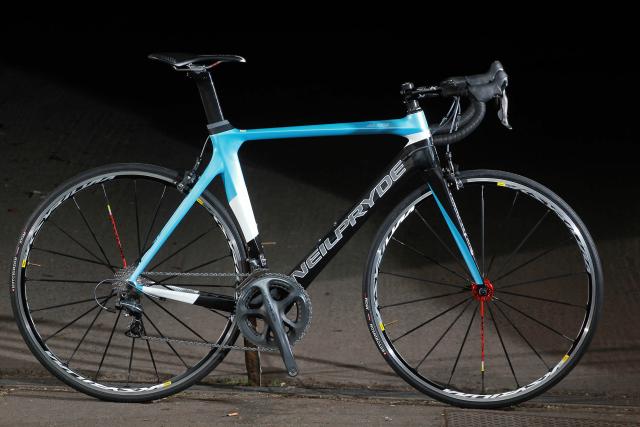
Of particular interest is the lower third of the down tube which features what Neilpryde call an 'Extended Kammtail'. The kamm tail is the latest buzzword in the cycling world. In effect it's an aerofoil with the tail sawn-off, and has been used on cars since the 50s. What Neilpryde have done, however, is extend this concept so that both the down tube and seat tube act as a single kammtail aerofoil enabling them to increase the size of the down tube without damaging aerodynamic performance.
The Alize can be had in four models beginning with a Shimano 105 bikes costing £2,199.
Specialized S-Works Venge
The choice of Mark Cavendish, Specialized’s first foray into aero road bikes has been a successful one. The Venge was the result of a collaboration with F1 team and car manufacturer McLaren, who helped develop the aero frame before its launch in 2011.
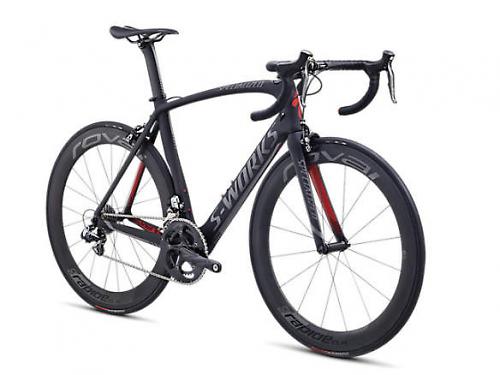
The frame draws on the F1 team's aerodynamic expertise with a a 3:1 airfoil fork with a narrow leading edge, along with a narrow (1 1/8in at the top to 1 3/8in at the crown) tapered head tube to minimise the frontal area leading to a reduction in drag. The shaped seat tube curves around the rear wheel and the seat stays have an airfoil shape with a flat outer surface and rounded inner surface to improve the performance in crosswinds. Naturally, cables are routed internally. Specialized claim it saves 23W at 45kph compared to their SL3 road frame.
The Venge is sold in four models starting with thje Venge Comp costing £2,500 with Shimano 105.
Hear Mark Cavendish talking about his Venge.
Ridley Noah Fast
The Noah Fast frame has four key themes; aero shaped tubes, integrated brakes, slotted forks and stays, and F-Surface. We’ll start with F-Surface because we can’t think of any other road frame that has this - Ridley have been using it on their Dean time trial bike for a couple of years now. Applied to the leading edges of the head tube, seat tube and seat mast, is a 5mm-wide raised strip that is designed to delay flow separation and keep the air attached for as long as possible.
In aerodynamic fields it’s called a turbulator. When air passes over the frame, the layer of air closest to the surface is the boundary layer. Near the leading edge of the tube this boundary layer will be laminar, but in its journey across the tube the air becomes turbulent and will eventually separate from the surface. This separation point causes drag, because of the lower pressure behind this point. These strips move the separation point further along the tube profile closer to the trailing edge, by forcing the boundary layer to be turbulent (rather than smooth laminar) which has the effect of delaying the point of separation
Ridley have actually designed the mini V-brakes as part of the carbon structure of the forks and seat stays. The other key aerodynamic feature is what they’ve dubbed F-Splitfork technology, and which amounts to slots in the fork and seat stays. This is a technology component manufacturer Oval Concepts developed a few years ago in their Jetstream fork, and which they licensed to Ridley for use in their Noah.
The Noah Fast starts from £4,940.
Read our first look of the Noah Fast we're testing.
Canyon Aeroad CF
German manufacturer Canyon brought out their Aeroad, their first ever aero road bike, in 2011 and it has been pressed into service this season under the Katusha team, a common sight in breakaways. Joaquim Purito Rodriguez rode an Aeroad CF for his Giro d’Italia and Vuelta a España stage wins last year.
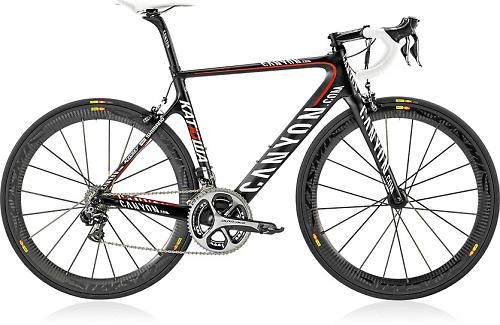
The frame has been designed to reduce the frontal area, so there’s less bike to push through the air. To that end the head tube is narrower than that of their regular road frames. The down tube is deeply ovalised, there’s a skinny seat tube and the cables are all routed internally.
There's eight models to choose from starting with the Aeroad CF 7.0 at £2,249.
Felt AR1
Felt were one of the earlier adopters of aerodynamics in a regular road bike, bringing out the AR way back in 2008. The airfoil-profiled down tube is deep – it varies but it’s never less than 65mm – and shadows the line of the front wheel, while the seat tube moulds around the leading edge of the rear wheel to smooth the airflow there. It's one of the bikes here that looks more like a time trial frame with drop handlebars.
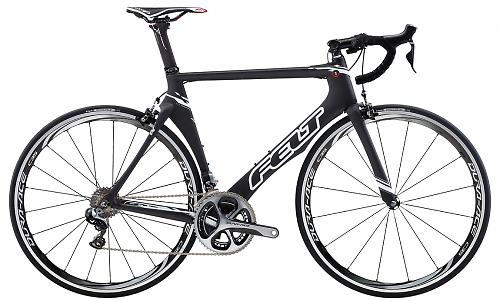
The top tube has a shield-shaped profile – it’s flat-topped with curved sides and tapers considerably as it slopes gently down to the seat tube junction – and the seat stays are slim, not to say skinny, in contrast to the meaty chainstays.
There's five bikes in the AR range, starting with the Shimano 105 built AR5 costing £2,000.
You can read our Felt AR review here.
Trek Madone 5, 6 and 7 Series
The most important aero feature of the Madone is the KVF aero tubing. KVF? It stands for Kammtail Virtual Foil and it was first introduced on Trek's Speed Concept time trial bike. The KVF tube profile is an airfoil shape with the tail chopped off square. Trek reckon that the design makes the air behave as if the tail was actually there in order to reduce drag. The advantages of cutting the tail off are that it uses less material and so reduces weight; it works well in crosswinds; and it allows Trek to stay within the UCI's equipment rules.
You can see the KVF shape most clearly on the down tube – the sides curve around and then the rear edge is cut off flat. Trek use the same shaping on the head tube, seat tube, the seat stays and the upper portion of the fork blades. Integration has become ever more important in bike design recently with manufacturers seeking to reduce drag by making everything blend together for more aerodynamic efficiency.
Trek have been busy creating their own new front brake that fits neatly to the fork - it's badged up as belonging to their in-house Bontrager brand. One arm of the Bontrager Speed Limit brake is attached via a central bolt, the other fixes direct to the fork leg. This saves a little weight and allows the two arms to sit flush against the fork crown. Trek reckon that the combined effect of the KVF fork shaping and the integrated front brake reduces drag by another 76g.
Trek share the aero features across three platforms, the 5, 6 and 7 series Madone. While they share the same tube shaping and rear brake placement, they differ in the carbon fibre manufacturing, the 6 and 7 series are built in the US while the 5 is made in the Far East. They also use different grades of carbon fibre. The Madone 5.2 costs £3.000, that's your entry into Trek's aero Madone range. The price rises to £4,900 for the Madone 6.5 and £9.119 for the Madone 7.
Avanti Corsa DR
Integration has been key to this bike, and there are no frivolous styling details: function leads form here. The aerodynamic and engineering requirements have led to the shape of the bike. In a first that we know of, the quick release skewers are integrated. By this we mean they are designed to sit flush with cutaway sections in the fork and seat stays. The top headset spacer is even aero shape, and the minimal seatpost clamp is seamlessly integrated into the frame.
You can choose from five Corsa DR builds, starting with the Corsa DR 1.0 at £2,200.
See the design process behing this bike.
Boardman AiR
Chris Boardman knows a thing or two about aerodynamics, winning the individual pursuit gold medal at the 1992 Barcelona Olympics on his Lotus 108 superbike and breaking the hour record on three occasions. He’s known as the Professor, on account of his attention to detail, and has been significant in his involvement with Team GB in developing their aero track frames.

The AiR in his signature range of road bikes borrows heavily from the stunning AiR TT bike. The frame has a deep section down tube, internal cable routing and a fair amount of melding together at the point where the top, down and head tubes meet. There are flat surfaces on the inner faces of both the fork and rear stays, designed to work with deep section wheels and ensure that airflow smoothed by the wheel isn't disturbed by a more traditional section fork blade.
Six models in the AiR range span price points from the £1,999 AiR 9.0 up to the £5,499 AiR 9.8.
Will you be eyeing up one of these for your next road bike purchase?
David worked on the road.cc tech team from 2012-2020. Previously he was editor of Bikemagic.com and before that staff writer at RCUK. He's a seasoned cyclist of all disciplines, from road to mountain biking, touring to cyclo-cross, he only wishes he had time to ride them all. He's mildly competitive, though he'll never admit it, and is a frequent road racer but is too lazy to do really well. He currently resides in the Cotswolds, and you can now find him over on his own YouTube channel David Arthur - Just Ride Bikes.
Latest Comments
- Kapelmuur 0 sec ago
Oldfield Lane, Altrincham, which links Oldfield Brow to Dunham Park was permanently closed to motor traffic during the pandemic....
- ACyclingGuitarist 14 min 14 sec ago
Very sad news this, I rode with this lad once on a new group ride I was trying out last year. He was very welcoming and I could tell he was a kind...
- chrisonabike 25 min 28 sec ago
You are right in that we need some negative feedback as well as positive feedback to keep behaviour in check....
- Steve K 1 hour 3 min ago
Agreed, and I'd contribute....
- BPhillips 1 hour 12 min ago
Thanks for your thoughts David. Argos is looking a good bet.
- mdavidford 1 hour 23 min ago
I'm pretty sure this is at least the third time the BBC have had a story on this - not sure why they keep forgetting that they've covered it.
- cyclisto 1 hour 36 min ago
Watching sports seems super boring to me, so not a problem....
- Secret_squirrel 1 hour 47 min ago
Wattbike are notorious for releasing products before the software is ready. Likely long term it will be fine....
- Secret_squirrel 1 hour 51 min ago
That is a horror show. A gravel racers bike but since it has a motor no racer can use it....
- dubwise 3 hours 8 min ago
Have you seen the prices for vinyl records these days? Music piracy is still alive and kicking.
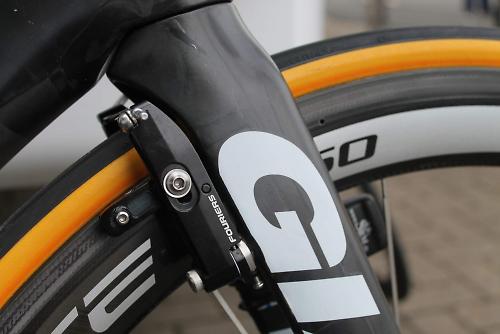
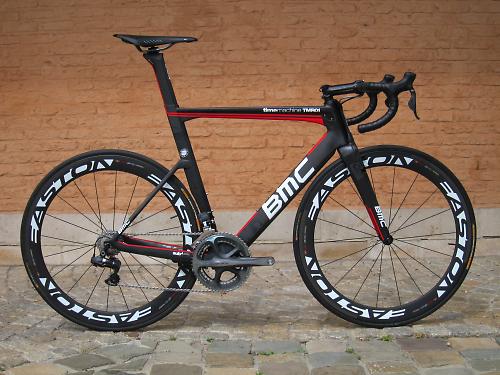

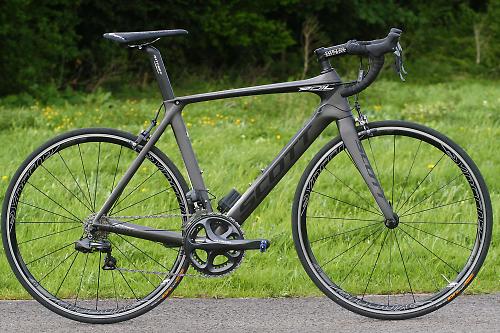

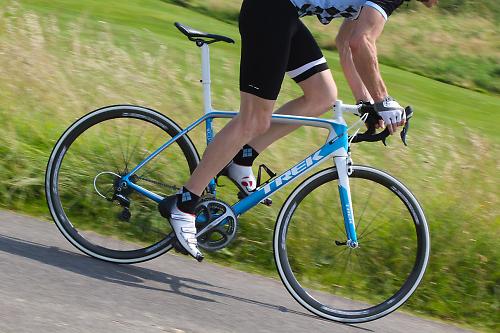

Add new comment
26 comments
Will this post be updated for 2016 with the recent releases of the new Foil, Venge and Madone?
And I always thought Fignon was the Professor and Boardman was the Grocer.
Note to author: it might make for a nice pic, but as soon as you stand up any aero advantage is blown straight out of the water...
As @Darkerside notes, if you want to do aero properly then this ain't the way, /unless/ you are doing sporting riding to UCI rules. If you are then of course you're forced to play the game their way, but as a certain Mr. Obree will tell (and demonstrate to) you, if you want to go properly fast then UCI compliant bikes are *NOT* the way forwards.
Simples (or perhaps Dimples)
Just calculate your Reynold's number (and it is not 953 before you start...)
Work out in your head what the Navier-Stokes equation says about optimum speed for vortex shedding (taking account of the wind speed) - whilst clearly working out in your head the power you are using (knowing the gradient of the road and your speed - and neglecting the wind).
and if your head is now hurting as much as it should be
- then you'll see its less of a drag just to pedal faster...
- and keep your arms in...
http://www.aerospaceweb.org/question/aerodynamics/q0215.shtml
I do like the STORCK AERNARIO PLATINUM
- and the idea of the sectional aerodynamic shaping on all the tube cross-sectioned relative to their height from the road.
Why is the Trek Madone there?
Surely Madone is more of an all-around bike than an aerobike?
Just becasue they have a "tube that is more aero" doesen't make it a pure aerobike in my opinion xD
I would say Madone goes more against SuperSix, Dogma and so on.
Quite a lot of reasons: KVF frame tubes, KVF fork blades, integrated front brake, rear brake behind BB, no brake bridge, DuoTap compatibility...
Where's the orbea orca?
In my garage
Also why did you picture last years Cervelo S5? The new one is worlds apart, the old one is simply a TT frame with road bars and handles like a tank!
Sorry Cammy, but we just spoke to Cervélo about this to double-check that we weren't going nuts. The S5 hasn't been redesigned since last year, it just has a different finish.
Aero bikes may offer measurable benefits for someone regularly clocking +20mph solo and who spends most of the time on drops and already perfected their position/flexibility.
A typical guy cruising at 15-18mph mainly on the hoods would be deluded to expect or claim 1 or 2 mph speed increase.
But hey. It's the road cycling community after all, where people actually claim 1-2mph gains from lighter wheels alone
"To reduce the degree of turbulent air BMC use Tripwire".
This phrase is true but at the same time misleading to anyone trying to understand boundary layer aerodynamics. The "Tripwire" has the exact same purpose as the Ridley F-surface: it trips up the airflow adjacent to the body and makes it turbulent. This turbulence is composed of a sheet of sub-millimeter scale vortices in contact with the body surface. The effect is to delay flow separation, that causes much larger scale and more chaotic turbulence).
All techniques discussed here were already well known a century ago, except the Kamm from the nineteen thirties.
That Cervelo is horrifically ugly. Didn't so much fall out of the ugly tree as ride into it at full speed. Which is a shame cos Cervelos normally are some of the best looking bikes out there with their pencil thin seatstays.
I really like the BMC though, it looks mean and purposeful. It looks fast just being still.
The Specialized is very nice too.
I love the curves of the Venge and Ridley, but really dislike the Cervelo and BMC - all BMCs actually.
If you want to get a top end race bike then this is where the manufacturers are going so the question of whether it benefits the average rider is immaterial. It doesn't disadvantage you so why not.
I think it makes a difference. I have a Ridley Noah (older one before they integrated the brake) and I notice less wind resistance at higher speeds but I think you need to be getting up to 40km/h or so to start appreciating it.
That's not to say that most people wouldn't be just as well off on a less expensive model.
Look like old Adidas shorts...
In the top photo of this article, the guy riding the Cervelo. Can you tell me where those bib shorts are from???
Cheers
Yeah, Adidas from a few years ago. I look cool, don't I? Ha.
Notfastenough: In my experience, any problems in sidewinds are down to the front wheel way, way more than anything else. I've ridden a few of these bikes and not had any trouble handling any of them in crosswinds.
Everyone who says they're not pretty: get yourself a Pashley Princess (I'm joking; calm down!).
Realistically, how practical is aero for the 'rest of us'? I feel the crosswinds on my non-aero bike with normal-section shallow Mavic wheels - I dread to think how much I would feel them on one of these with deep-section wheels.
@pjt201 - I think the Neil Pryde, Canyon and Trek aren't bad looking. The Canyon's not pretty, but oddly is possibly the one I'd choose.
It's just as well that Cav is so damn quick, because no-one in their right mind would want to look at the Venge for longer than necessary.
A great collection of some of the worlds most fugly bikes!
"In the pro peloton aero road bikes have been quickly adopted, where the margins of victory are very slim and there has been a focus on gaining ever smaller performance gains over the years."
This says it all. it will not benefit the vast majority of cyclists
Cheaper method is to lose a little body weight and maybe some tighter fitting lycra.
Bit unfair to say it won't benefit the vast majority. How do you know this? What if I don't want to lose any weight?
I had my first experience of riding an aero road bike about a month ago, and I was gobsmacked at how much quicker it was than my regular bike.
I didn't love everything about it (the front end was a little sloppy), but the sheer speed and power transfer were phenominal, and highly addictive.
http://cycleseverything.blogspot.co.uk/2013/05/sullying-one-palete.html
Aerodynamically speaking,I'm
not
An awful lot of effort to not even get close to the aerodynamics of a recumbent :p
Is it me, or are aero road frames all ugly as sin?
just you
heh heh heh! I was thinking the same thing; though I do like the lazy curves of the Noah and the Boardman